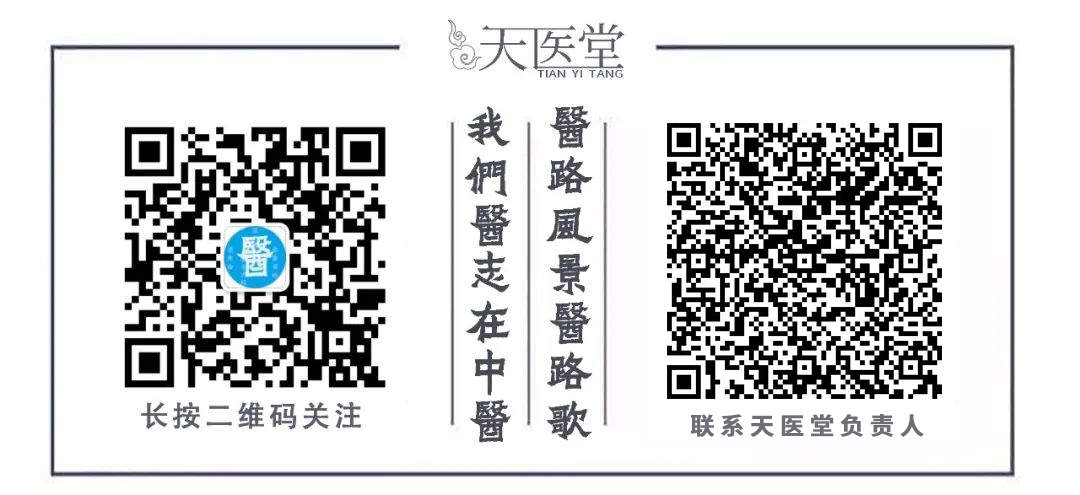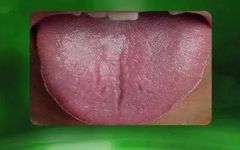
Tongue diagnosis is a crucial aspect of TCM observation, serving as a simple and effective method for diagnosis and differentiation by examining the color and shape changes of the tongue.
The tongue is the “sprout of the heart” and the external manifestation of the spleen. The coating is produced by the stomach qi. Tongue diagnosis primarily examines the tongue body and coating’s shape, color, moisture, and dryness to determine the nature of diseases, the severity of conditions, the balance of qi and blood, the status of body fluids, and the deficiency or excess of the organs.
The tongue body, also known as the tongue substance, is the muscular and vascular tissue of the tongue.
The tongue coating is a layer of moss-like substance attached to the tongue body, produced by the stomach qi.
Three major tongue types indicate potential health issues:
1. Cracked Tongue
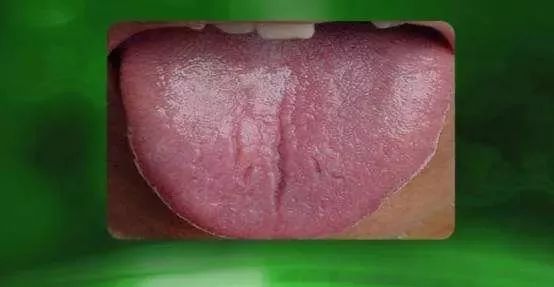
A cracked tongue is characterized by varying depths and shapes of cracks on the tongue surface.
(1) Excess heat damaging yin, often presents as a red tongue with cracks; if you notice this, seek medical attention promptly and avoid consuming heat-inducing foods. Instead, eat foods that nourish yin and reduce fire.
(2) Blood deficiency leading to dryness, often presents as a pale white tongue with cracks; this tongue type is common in patients with anemia or those recovering from major illnesses or surgeries. It is essential to consume blood-nourishing foods gradually.
(3) Spleen deficiency with dampness, often presents as a pale, plump tongue with teeth marks and cracks. This is common in patients with spleen deficiency and excess dampness; they should consume foods like yam (Shan Yao), coix seed (Yi Yi Ren) to strengthen the spleen and eliminate dampness.
2. Teeth-marked Tongue
A teeth-marked tongue shows impressions of teeth along the edges.
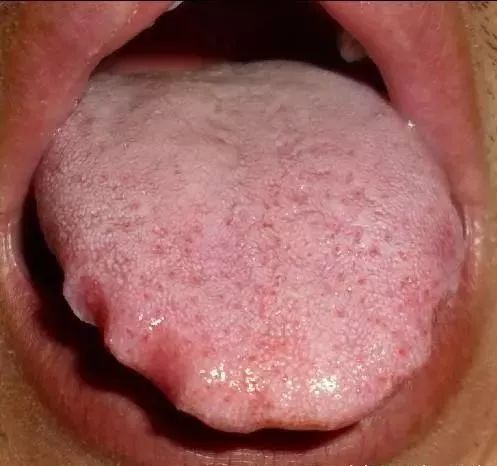
(1) A pale, moist tongue with teeth marks indicates excess cold and dampness. Patients should keep warm, avoid raw and cold foods, and minimize exposure to overly humid environments.
(2) A pale red tongue with teeth marks indicates spleen or qi deficiency. In daily life, one can consume dang shen (Codonopsis) and fu ling (Poria) in water.
(3) A red, swollen tongue with teeth marks indicates severe damp-heat phlegm obstruction. Patients with this condition should seek medical attention promptly.
3. Enlarged Tongue
An enlarged tongue appears swollen and may have teeth marks, with a pale and tender color.
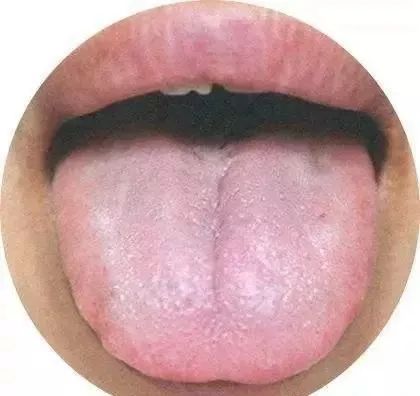
(1) A plump, tender tongue that is pale with teeth marks, thin white coating, pale face, fatigue, reduced appetite, abdominal fullness, and loose stools, indicates spleen deficiency. It is recommended to consume foods that strengthen the spleen, such as yam, poria, and coix seed.
(2) A large, plump tongue that is pale with teeth marks, significant swelling below the waist, reduced urination, cold limbs, and a dull or pale complexion, indicates kidney deficiency with water retention. It is advisable to consume foods like black beans and winter melon.
These tongue coatings require attention:
1. White Rough Coating, White Coating with Cracks
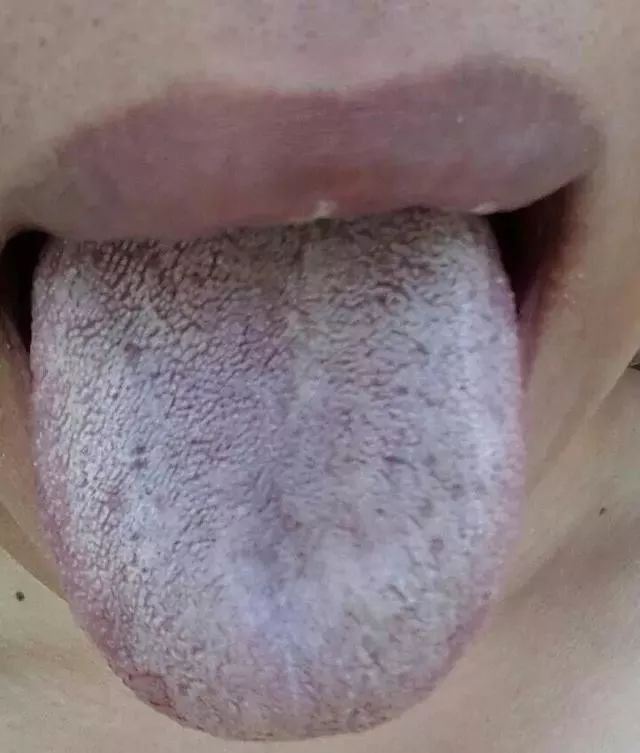
The white coating can be thin or thick, with rough and loose granules, dry and hard, resembling sand or stones, and feels rough to the touch. If the granules are finer and the texture is hard with cracks, it is referred to as white coating with cracks. This is commonly seen in external heat illnesses and acute infectious diseases.
2. Yellow Greasy Coating
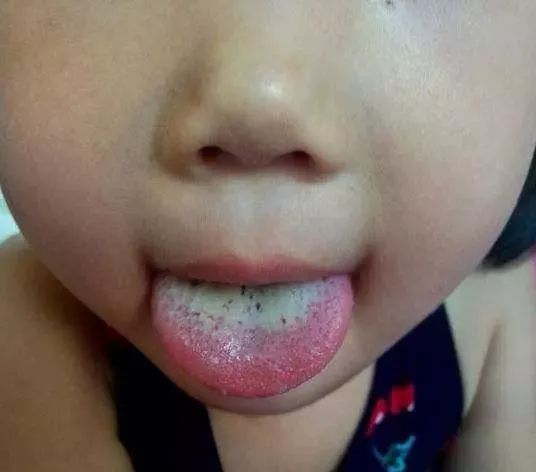
The yellow coating is sticky and dense, known as yellow greasy coating.
Yellow greasy coating indicates: damp-heat accumulation, phlegm-heat transformation, or food stagnation transforming into heat; it also indicates external heat and damp-heat conditions.
3. Gray Coating
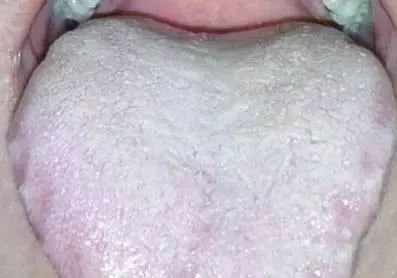
The gray coating is gray with black, referred to as “gray-black coating.”
Gray coating is dry and indicates yangming organ excess, with yin fluids depleted.
4. Black Coating

The black coating is darker than gray coating and often develops from gray or burnt yellow coatings.
Black coating indicates: internal heat, extreme heat, or excess cold. It often appears in severe stages of illness.
5. Burnt Yellow Coating
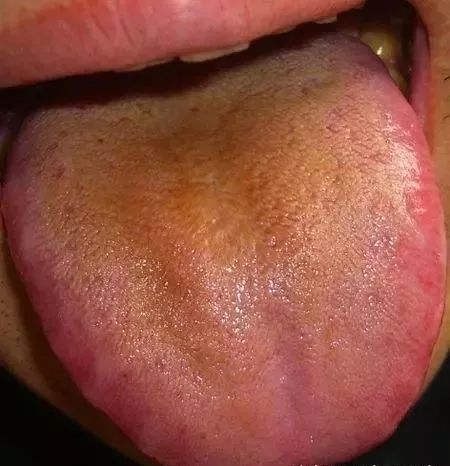
The burnt yellow coating is deep yellow or thick and dark yellow, especially prominent in the center or at the root of the tongue.
Burnt yellow coating indicates the presence of internal heat and accumulation in the stomach.
6. Geographic Tongue
A chronic marginal exfoliative glossitis occurring in the superficial layer of the tongue mucosa.
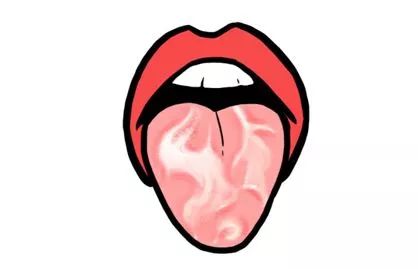
Geographic tongue is often associated with intestinal parasites, gastrointestinal dysfunction, or developmental issues in children, particularly those with weak constitutions. Some patients may have congenital geographic tongue.
Parents of children with geographic tongue should pay attention to:
1. Ensure the child gets adequate rest and timely introduction of supplementary foods. Prevent picky eating to avoid gastrointestinal dysfunction and malnutrition. Foods like almond, coix seed, and poria rice porridge can help strengthen the spleen and improve digestive function.
2. Carefully check for infections in teeth, tonsils, and buccal mucosa, and treat promptly if found.
3. Maintain oral hygiene; gently brush the tongue from back to front with a soft brush 1-2 times each morning to remove exfoliated epithelium effectively.
Every morning while brushing teeth, take 30 seconds to observe the tongue quality and coating; if there are significant abnormalities, timely adjustments are necessary!
Preventive Health in TCM: 9 Tongue Coatings for 9 Body Types
The tongue is the most sensitive organ in the body, and the tongue mucosa is the site of the most active oxidative metabolism of cells. Therefore, diseases of various systems can be most sensitively reflected on the tongue, leading to the saying, “changes in the tongue often accompany systemic disorders.” Among these, changes in tongue quality most reflect diseases, and tongue color reflects the inherent color of the organs. The changes in tongue quality and color are related to the circulation and balance of qi and blood, which modern medicine believes is associated with blood flow velocity, blood viscosity, and vascular contraction and relaxation.
The spleen opens to the mouth, and “the tongue is the external manifestation of the spleen and stomach.” Therefore, the tongue coating reflects the pathology of the spleen and stomach most promptly. In modern medicine, the thickness or exfoliation of the tongue coating depends on the condition of the tongue papillae; atrophy of the papillae leads to coating exfoliation, while excessive differentiation of keratinized epithelial cells results in thick coating. Different body types can also affect the tongue.
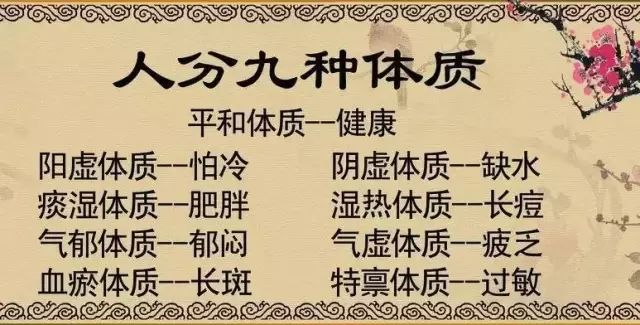
1.Normal Tongue
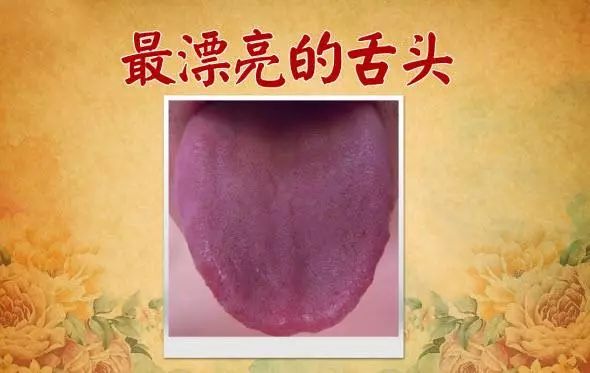
A healthy tongue is “light red with thin white coating.” It appears vibrant and flexible. When extending the tongue, it should be slightly separated from the corners of the mouth; even after several minutes of opening the mouth, the tongue should not easily dry out. The sublingual veins appear light purple, indicating smooth blood circulation and good health.
2.Blood Deficiency
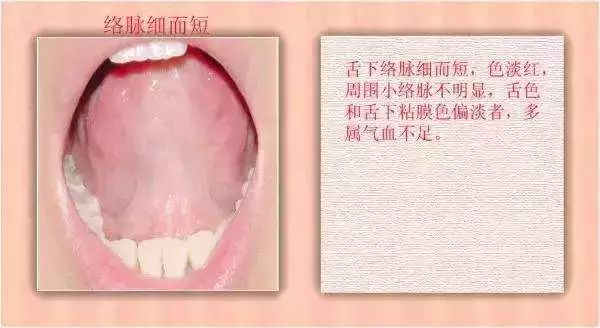
Qi and blood deficiency; the overall tongue appears pale white with no blood color; the coating is thin; the sublingual vessels are not clearly visible.
3.Yin Deficiency
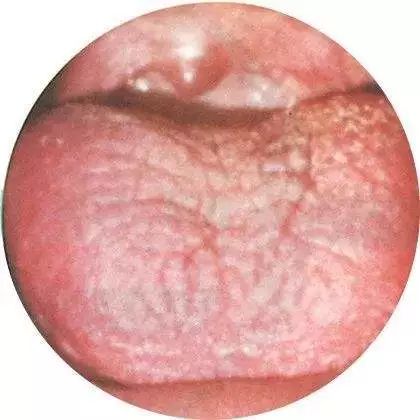
The tongue body is bright red or a crimson tongue; it has little or no coating or is shiny and peeled; there is little moisture or cracks.
Note: Cracks in the tongue do not necessarily indicate yin deficiency.
4.Yang Deficiency
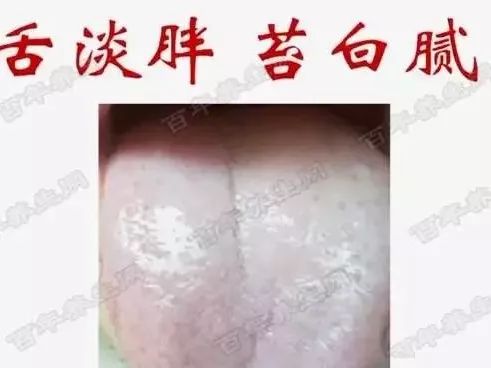
The tongue body is enlarged, pale, or has teeth marks.
5.Blood Stasis
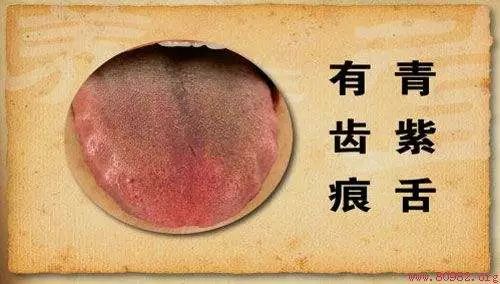
Black spots or bruises on the edges and tip of the tongue, with the entire tongue appearing dark, purple, or bluish; sublingual veins are engorged.
Note: The liver governs the smooth flow of qi and stores blood, regulating emotions. Emotional distress or invasion by external pathogens can lead to stagnant liver qi, resulting in depression or irritability, chest and rib distension, and pain; qi is the commander of blood, and prolonged liver stagnation can lead to blood stasis.
6.Qi Deficiency with Blood Stasis
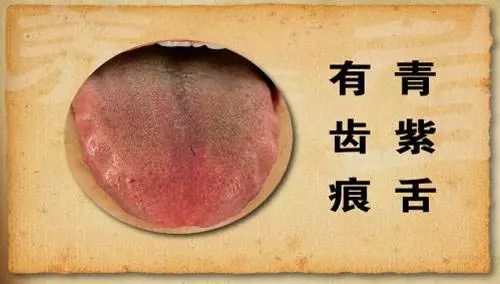
A pale white tongue or dark tongue, with thin white coating; black spots or bruises may be seen on the edges and tip; or engorged sublingual veins.
7.Phlegm-Dampness
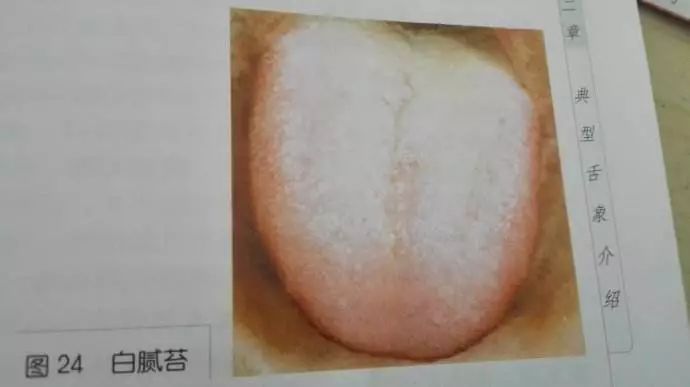
Thick, greasy coating, slippery texture, or a sensation of phlegm obstructing the throat, often accompanied by an enlarged tongue or teeth-marked tongue.
Note: Phlegm-dampness constitution often arises from various external or internal factors leading to dysfunction of the organs’ qi transformation, resulting in stagnation of water and dampness, which in turn affects organ function.
8.Spleen Deficiency with Excess Dampness
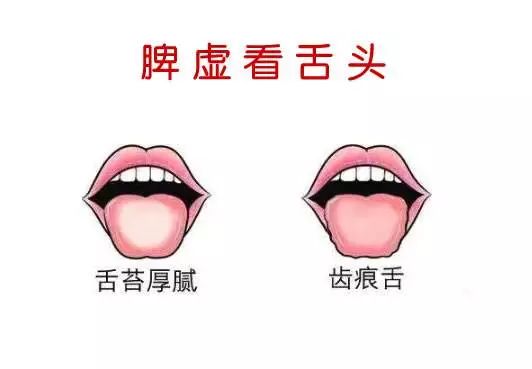
An enlarged tongue with teeth marks, a full coating, white greasy coating, or slight yellow phlegm at the root of the tongue.
Note: Teeth-marked tongue often results from pressure on the tongue body due to enlargement, thus frequently seen with an enlarged tongue, indicating spleen deficiency and a deficiency syndrome. If the tongue is moist with a white coating, it indicates spleen deficiency with cold dampness. If accompanied by yellow greasy coating, it indicates damp-heat phlegm obstruction.
Reminder
In TCM, there is a saying, “Preventive treatment of disease”; do not wait until you are ill to see a doctor. It is essential to pay attention to self-diagnosis and maintenance when healthy. Experts recommend that we learn to observe ourselves daily. The first observation is to check your tongue coating every morning. A normal tongue coating is: light red color, moist, thin white coating, and evenly distributed; this is essentially a light red tongue with thin white coating. The second observation is to check your stool; normal stool is banana-shaped, while dryness or diarrhea indicates an imbalance in the digestive system.
Note:The above knowledge is intended for the dissemination of TCM knowledge and is not for treatment purposes. If you belong to a certain constitution, you will inevitably have corresponding symptoms, but it does not mean that having these symptoms categorically classifies you into that constitution; other diagnostic methods should also be considered.

— THE END —
▶ Copyright Statement:
1. This article is excerpted from: Wuwei Ancient Method TCM, compiled by Li Yawen.2. This platform aims to disseminate TCM cultural knowledge, and the copyright belongs to the relevant rights holders. Please respect knowledge and labor; if you wish to reprint, please retain copyright information. If there are any improper uses, please feel free to contact us for negotiation.3. We welcome submissions; please send to [email protected]
